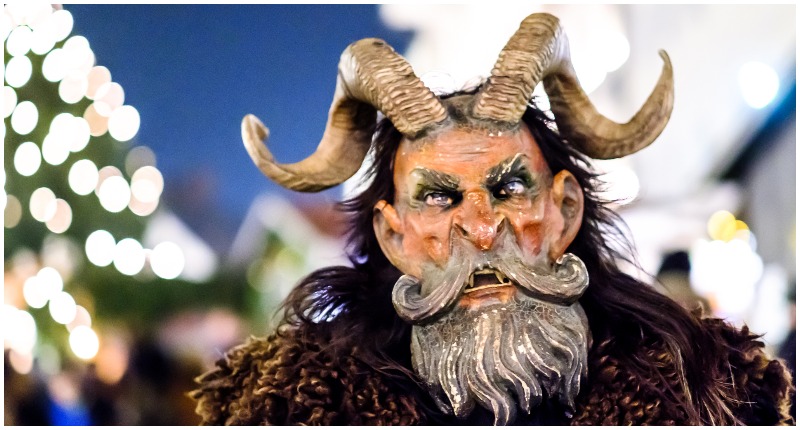Tinsel and baubles are appearing in every window. Festive music plays in every shop. With these things happening as early as October, finding an antidote to the Christmas cheer becomes a tempting prospect.
Which could explain the surge in popularity regarding Krampus. This sinister and monstrous figure sprang from Central European folklore. He is part-goat, part-demon and wouldn’t be able to fit a party hat on his head due to his prominent horns.
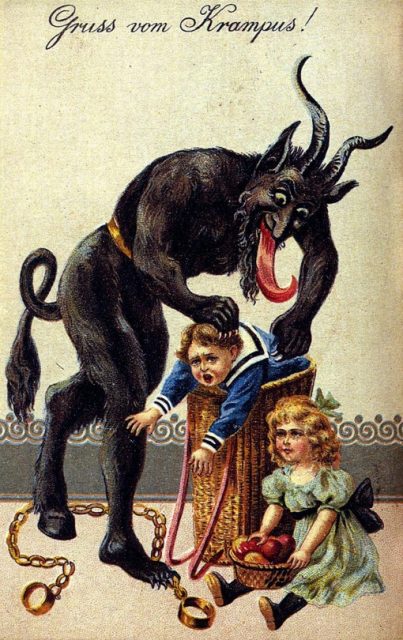
The name Krampus is derived from ‘krampen’, German for ‘claw’. Like Santa Claus, he visits children’s houses. But unlike Santa, his intentions are far from jolly.
Arriving in the dark between the night of December 5th and the morning of December 6th (when celebrations in Austria and south Germany begin), he brings a birch with which to beat the naughty. And if a child is seriously misbehaved, they suffer an even worse fate.
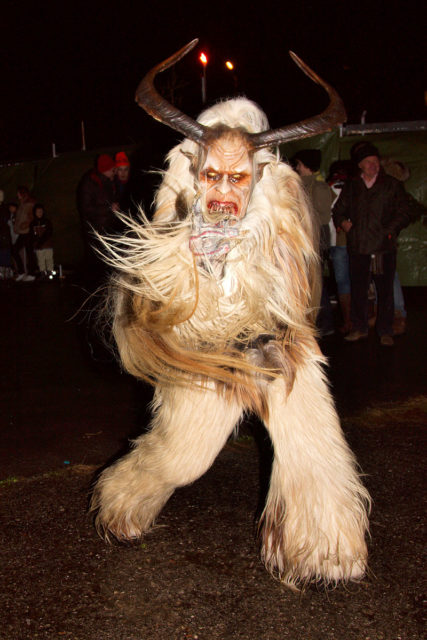
A 2015 article for Smithsonian.com described how little ones “can disappear, stuffed into Krampus’ sack and hauled off to his lair to be tortured or eaten.”
For those especially strict parents who feel the gentle chiding of St Nick isn’t enough — according to tradition, the worst it gets is leaving twigs in someone’s shoes — Krampus makes the perfect counterpart.
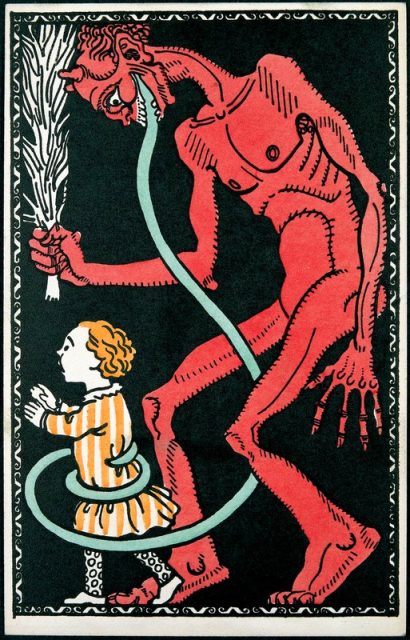
‘Krampusnacht’ or ‘Krampus Night’ is an essential part of the Christmas fun for some people. However the horned horror is not a recently added feature to festivities. The roots of the character go back centuries and have been traced back to ancient paganism.
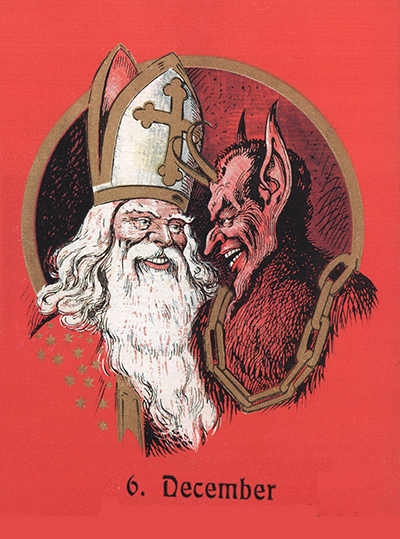
It’s believed he is the spawn of the Norse terror Hel, who ruled the underworld. In 2014 National Geographic mentioned that Krampus “also shares characteristics with demonic creatures in Greek mythology, including satyrs and fauns.”
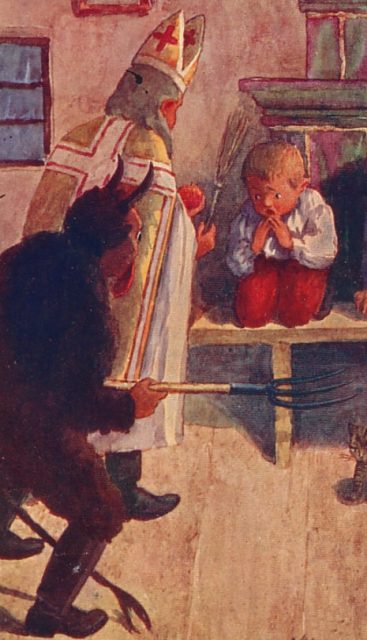
Perhaps the best explanation of Krampus comes from German-Austrian actor and screen villain par excellence Christoph Waltz. Appearing on The Tonight Show with Jimmy Fallon in 2014, he offered his own take on the phenomenon.
“It’s a Catholic nation,” he said. “It works on traumatization…and so we have Krampus!” Further clarification was given with: “You have to remember Sigmund Freud was Austrian.”
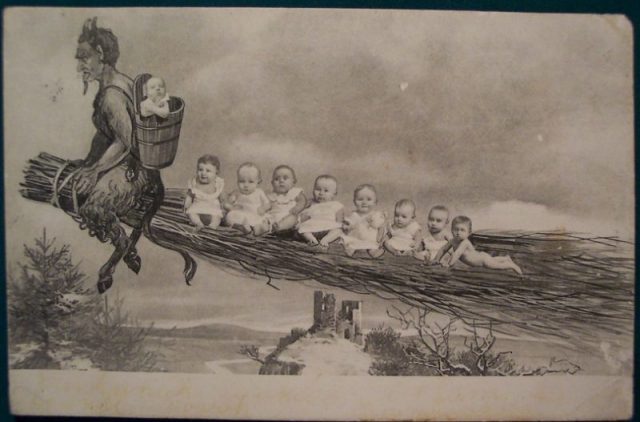
It was this primal fear, rooted in deep-seated social conventions, that led to Krampus facing a form of persecution. The Catholic Church attempted a crackdown on the devilish icon in the 12th century.
Then things got political. As written by National Geographic, “During World War II, Europe’s fascists deplored Krampus as a creation of the Social Democrats.” So in a strange twist, the evil figure was a potential enemy of Hitler.
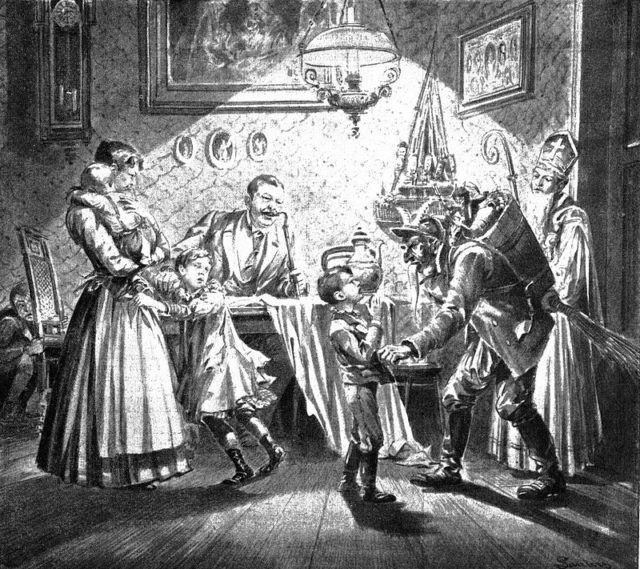
These days the matter is a lot more light-hearted. Merchandise abounds for the furry fiend, and audiences know the name of Krampus thanks to the 2015 horror comedy starring Adam Scott and Toni Collette.
The Alpine tradition of a ‘Krampus Parade’ or ‘Krampus Run’, where men don costumes based on the beast, is traveling across the world. As well as finding popularity in Europe, it’s even spread to the United States.
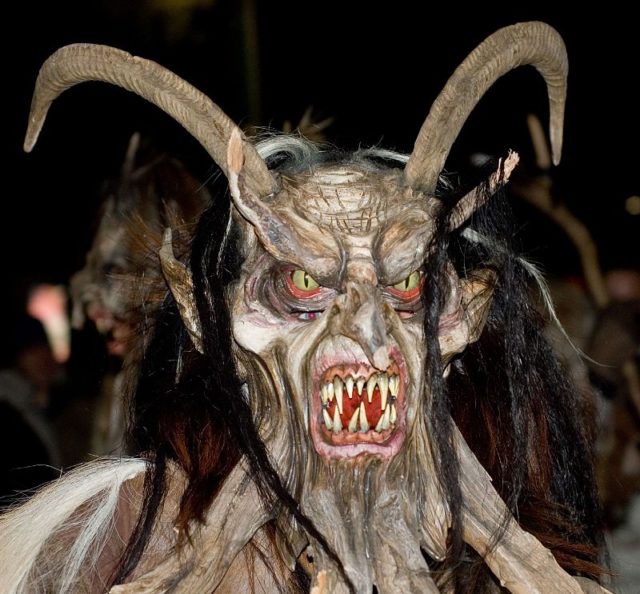
The spectacle has good intentions at its heart. Not only does it give the local population a healthy dose of seasonal scares, it enacts a pagan ritual that supposedly drives away the chilly spectres of Winter.
Despite Krampus’ fearsome reputation, the event seeks to be inclusive. Refugees in Austria whose children might be petrified by the sight of the monstrous parade have been given a presentation on this most long-standing of boogeymen. This hopefully sets their minds at ease.
It seems Krampus is here to stay. Kids trying to sleep on Christmas night will wonder if those hoof sounds on the rooftops are reindeer or something else. But it’s all part of a natural balance.
Read another story from us: 4 Cases When Grinches Really Stole Christmas
Jeremy Seghers, organizer of a Krampus event in Florida, summed up the situation for Smithsonian.com: “The Krampus is the yin to St. Nick’s yang.”
